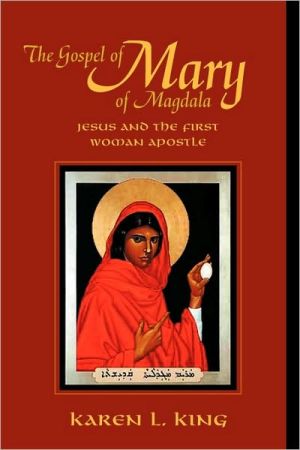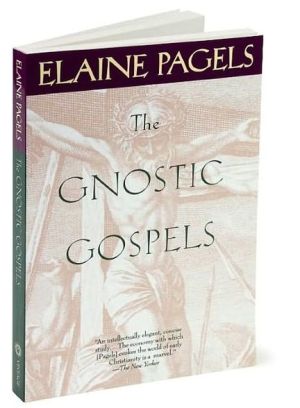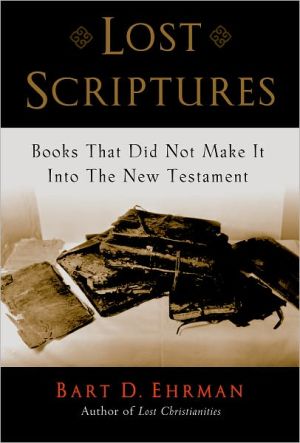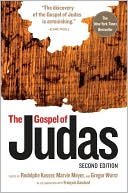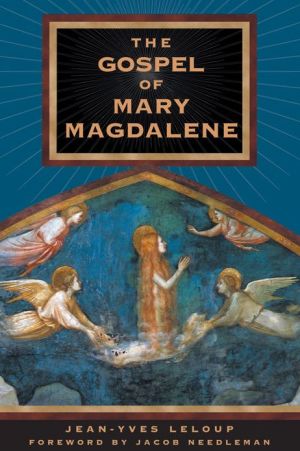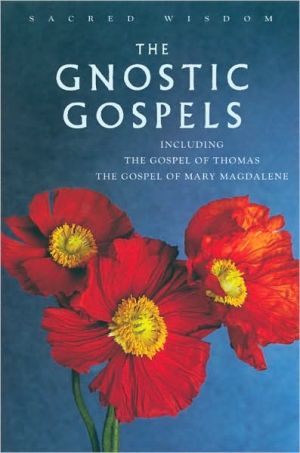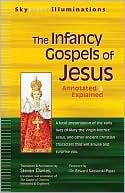The Gospel Of Mary Of Magdala
Lost for more than fifteen hundred years, the Gospel of Mary is the only existing early Christian gospel written in the name of a woman. Karen L. King tells the story of the recovery of this remarkable gospel and offers a new translation. This brief narrative presents a radical interpretation of Jesus' teachings as a path to inner spiritual knowledge. It rejects his suffering and death as a path to eternal life and exposes the view that Mary Magdalene was a prostitute for what it is a piece...
Search in google:
Lost for more than fifteen hundred years, the Gospel of Mary is the only existing early Christian gospel written in the name of a woman. Karen L. King tells the story of the recovery of this remarkable gospel and offers a new translation. This brief narrative presents a radical interpretation of Jesus' teachings as a path to inner spiritual knowledge. It rejects his suffering and death as a path to eternal life and exposes the view that Mary Magdalene was a prostitute for what it is a piece of theological fiction. The Gospel of May of Magdala offers a fascinating glimpse into the conflicts and controversies that shaped earliest Christianity. Includes complete photos of the Berlin Codex, Papyrus Oxyrhynchus 3525, and the Rylands Papyrus Publishers Weekly The Gospel of Mary of Magdala, a second-century gospel that was discovered in the 19th century and not published until 1955, shows Mary to be the apostle (yes, apostle) to whom Jesus revealed deep theological insights. King, a professor at Harvard Divinity School and author of What Is Gnosticism?, argues that the Gospel prefers inner spiritual knowledge to exterior forms such as the law and that it reveals some of the gender conflicts and spiritual divisions of the early Christian movement. King places translations of two extant fragments of the Gospel of Mary side by side, so readers can see the slight differences that appear in the originals. (Because approximately 10 pages of the Gospel are still lost, scholars believe we only have about half of its original material.) In the brief text, the male apostles are afraid and despondent after Jesus' post-resurrection departure, so Mary tries to cheer them by revealing some of the esoteric teachings that Jesus imparted to her alone. But the teachings cause discord, as Peter and others refuse to believe that Jesus would have given such "strange ideas" to a woman. ("Did he choose her over us?" a petulant Peter asks.) The bulk of King's book takes up various issues raised by the text-questions about the Son of Man, law, women's authority, visionary experiences and the body. This is a serious scholarly study with the apparatus of an academic book, including Coptic facsimiles of the papyrus, and Coptic and Greek phrases sprinkled throughout the text. (Nov.) Forecast: The unexpected popularity of the novel The Da Vinci Code has boosted sales of various religion books that deal with the Gnostic gospels-Elaine Pagels's bestseller Beyond Belief and different translations of the Gospel of Thomas. The Da Vinci effect may well work its esoteric magic here, even though this is clearly not a book for the dilettante. Copyright 2003 Reed Business Information.
PrefaceAbbreviations & SiglaPt. IThe Gospel of Mary1Introduction32Translation & Text133Gospel, Revelation, Dialogue29Pt. IIThe Savior's Teaching in the Gospel of Mary4The Body & the World375Sin, Judgment, & Law496The Son of Man597Vision & Mind638The Rise of the Soul699Controversy over Mary's Teaching83Pt. IIIThe Gospel of Mary in Early Christianity10The Jesus Tradition9311Paul11912The Gospel of John12913The Apostles13514The History of Christianity155Notes191Terms & Sources213Works Cited216Index of Citations227
\ Publishers WeeklyThe Gospel of Mary of Magdala, a second-century gospel that was discovered in the 19th century and not published until 1955, shows Mary to be the apostle (yes, apostle) to whom Jesus revealed deep theological insights. King, a professor at Harvard Divinity School and author of What Is Gnosticism?, argues that the Gospel prefers inner spiritual knowledge to exterior forms such as the law and that it reveals some of the gender conflicts and spiritual divisions of the early Christian movement. King places translations of two extant fragments of the Gospel of Mary side by side, so readers can see the slight differences that appear in the originals. (Because approximately 10 pages of the Gospel are still lost, scholars believe we only have about half of its original material.) In the brief text, the male apostles are afraid and despondent after Jesus' post-resurrection departure, so Mary tries to cheer them by revealing some of the esoteric teachings that Jesus imparted to her alone. But the teachings cause discord, as Peter and others refuse to believe that Jesus would have given such "strange ideas" to a woman. ("Did he choose her over us?" a petulant Peter asks.) The bulk of King's book takes up various issues raised by the text-questions about the Son of Man, law, women's authority, visionary experiences and the body. This is a serious scholarly study with the apparatus of an academic book, including Coptic facsimiles of the papyrus, and Coptic and Greek phrases sprinkled throughout the text. (Nov.) Forecast: The unexpected popularity of the novel The Da Vinci Code has boosted sales of various religion books that deal with the Gnostic gospels-Elaine Pagels's bestseller Beyond Belief and different translations of the Gospel of Thomas. The Da Vinci effect may well work its esoteric magic here, even though this is clearly not a book for the dilettante. Copyright 2003 Reed Business Information.\ \ \ \ \ Library JournalKing (ecclesiastical history, Harvard Divinity Sch.) is one of the foremost interpreters of gnosticism for the contemporary lay audience and author of the outstanding introduction What Is Gnosticism? Here she translates, interprets, and provides historical context for the fifth-century Coptic manuscript of this gospel, whose central voice is Mary Magdalene. The author demonstrates that this gospel, composed around the early part of the second century and similar to other noncanonical gnostic or heretical writings, exemplifies the diversity of Christian understandings of Jesus' mission before the establishment of a male-dominated orthodox position in the time of Constantine. The Gospel of Mary presents an alternative view of Jesus as bringer of salvation through spiritual knowledge rather than through atonement on the cross. Mary of Magdala is portrayed here as the first to see the spiritual (not physical) risen Christ. The legend that she was a prostitute was an invention of the later authorities, who transformed the image of the most prominent early female believer from apostle to repentant whore. This is a rich, rewarding, and eyeopening review of how the only gospel written in the name of a woman can reveal the depth and diversity of the early Christian community. Strongly recommended for all libraries.-William P. Collins, Library of Congress Copyright 2003 Reed Business Information.\ \
